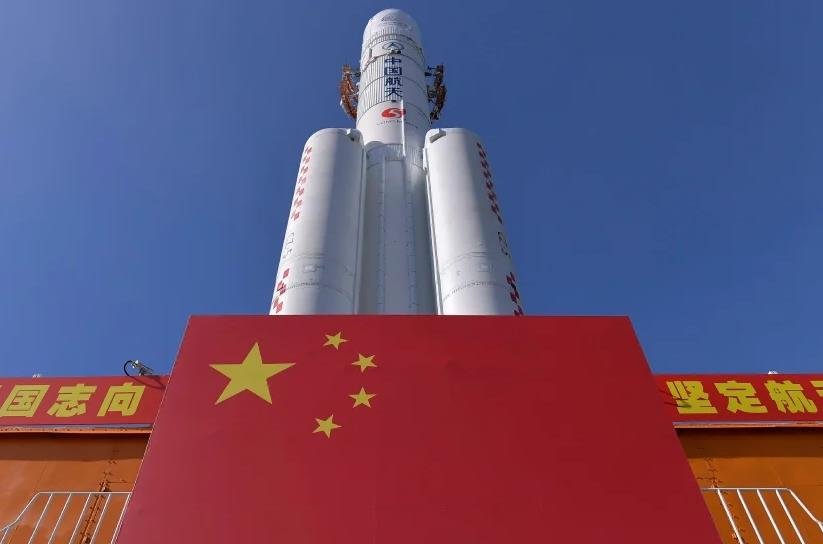Two standout Chinese scientists, Li Chunlai and Xu Huji, have been honored on Nature’s annual list of “10 People Who Have Shaped Science.” Their groundbreaking work exemplifies China’s rapid advancements in scientific research and technology.
Li Chunlai serves as the deputy chief designer for China’s Chang’e 6 mission. This mission marked a significant milestone by being the first to collect samples from the moon’s far side, specifically landing in the South Pole-Aitken basin. Meanwhile, Xu Huji, a physician at the Naval Medical University, has pioneered the use of allogeneic universal CAR-T therapy to treat immune system disorders. Nature recognized Xu as “the daring doctor behind a world-first treatment for autoimmune disease.”
Chang’e 6: A Leap Forward in Lunar Exploration
The Chang’e 6 mission isn’t just another lunar endeavor. It set new records by successfully landing in one of the moon’s most challenging regions.
“We were pushing the boundaries of what’s possible with lunar exploration,” Li Chunlai remarked. The mission’s success opens doors for future scientific studies and potential human habitation on the moon.
Mission Highlights:
- First Sample Collection from Far Side: Chang’e 6 collected unprecedented geological samples.
- International Collaboration: The mission included four foreign payloads from France, the European Space Agency, Italy, and Pakistan.
- Advanced Technology Utilization: Employed cutting-edge robotics and communication systems to navigate the harsh lunar environment.
| Mission Aspect | Details |
|---|---|
| Landing Site | South Pole-Aitken Basin |
| Sample Collection | 15 kg of lunar soil and rock |
| International Partners | France, ESA, Italy, Pakistan |
| Technology Used | Autonomous navigation, high-resolution imaging systems |
The successful deployment of Chang’e 6 not only showcases China’s growing capabilities in space exploration but also emphasizes the nation’s commitment to international scientific collaboration.

Revolutionizing Medicine: Xu Huji’s CAR-T Therapy Breakthrough
Xu Huji’s work in developing allogeneic universal CAR-T therapy marks a significant advancement in medical science. This innovative treatment offers hope to millions suffering from autoimmune diseases.
“Applying CAR-T therapy to immune disorders was a bold move,” Xu explained. “We aimed to create a treatment that could be widely accessible and highly effective.”
- World-First Treatment: Successfully treated patients with severe autoimmune conditions using CAR-T cells.
- Scalability: Developed a method to produce CAR-T cells that can be used for multiple patients, reducing costs and increasing availability.
- Global Impact: The therapy has the potential to benefit hundreds of millions worldwide.
This breakthrough not only enhances patient outcomes but also positions China as a leader in biotechnological innovations.
China’s Scientific Momentum: A Broader Perspective
The accomplishments of Li and Xu are just the tip of the iceberg. China’s scientific community is experiencing a surge in research and development across various fields.
Factors Driving Progress:
- Increased Funding: Significant investment in research institutions and technological infrastructure.
- Talent Development: Emphasis on education and training to cultivate top-tier scientists and engineers.
- Global Collaboration: Partnerships with international organizations and researchers to foster knowledge exchange.
These elements collectively contribute to China’s rapid ascent in the global scientific arena.
Open Attitudes Foster Innovation
China’s approach to scientific advancement is characterized by openness and collaboration. This is evident in the Chang’e 6 mission’s inclusion of international payloads and the universal application of Xu’s medical therapies.
- Collaborative Missions: Engaging with global partners enhances the quality and impact of scientific missions.
- Inclusive Research: Sharing breakthroughs and technologies ensures widespread benefits and fosters trust.
- Cultural Exchange: Encouraging diverse perspectives enriches the research environment and drives innovation.
Such an inclusive strategy not only accelerates progress but also builds a foundation for sustainable scientific growth.
Future Prospects: What Lies Ahead
With trailblazers like Li Chunlai and Xu Huji leading the charge, China’s trajectory in science and technology is poised for even greater heights.
Upcoming Initiatives:
- Next-Generation Lunar Missions: Plans to establish a lunar research base in the coming decade.
- Advanced Medical Research: Continued development of universal therapies and personalized medicine.
- Sustainable Technology: Focus on green energy solutions and environmentally friendly technologies.
These initiatives signal a robust commitment to maintaining momentum and addressing global challenges through scientific excellence.
Global Implications of China’s Scientific Advancements
China’s advancements have far-reaching implications, influencing global scientific standards and fostering international cooperation.
By pushing the boundaries in space exploration and medical science, China sets new benchmarks and inspires other nations to elevate their research efforts. This dynamic not only enhances global scientific knowledge but also contributes to solving universal problems.
















